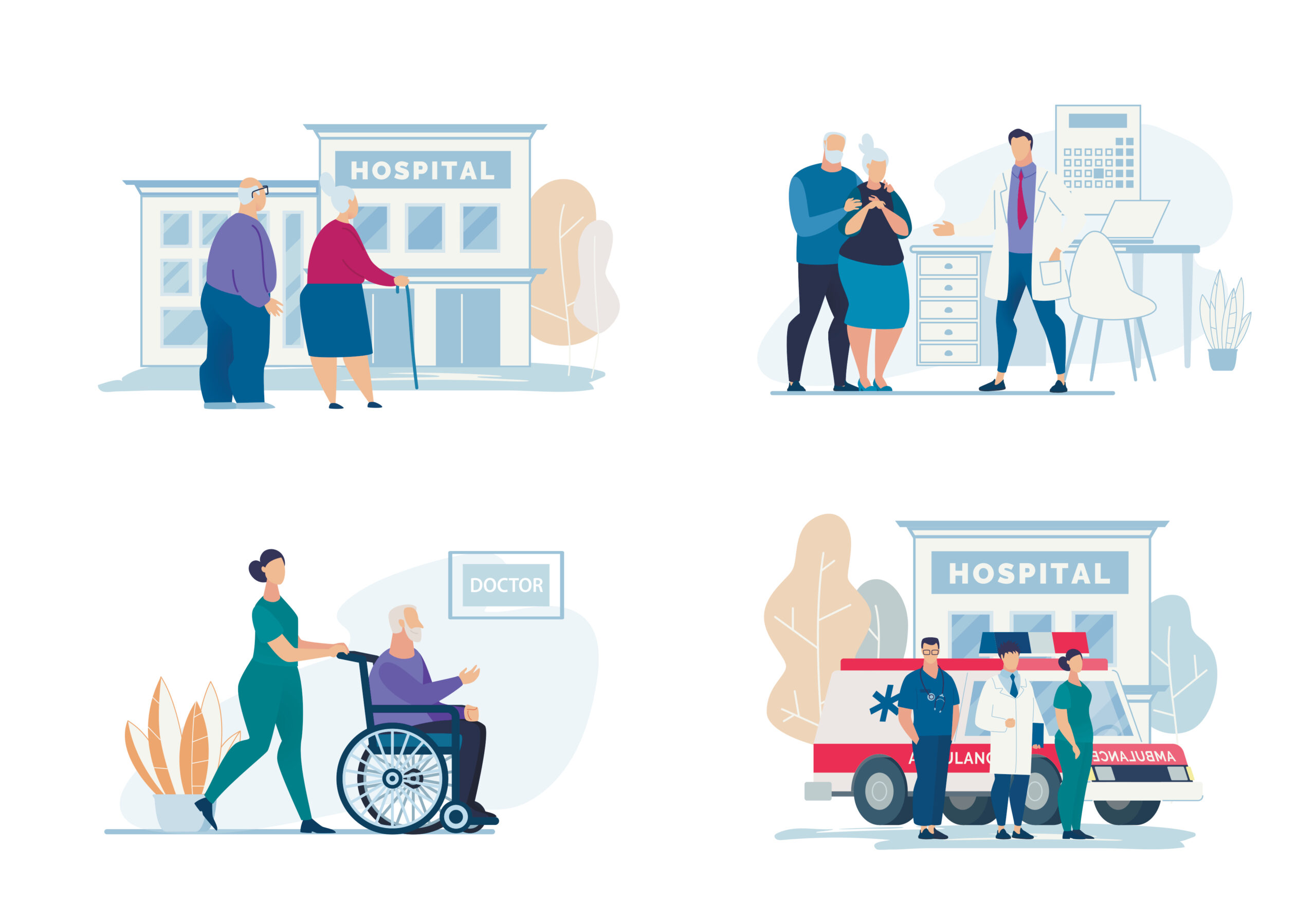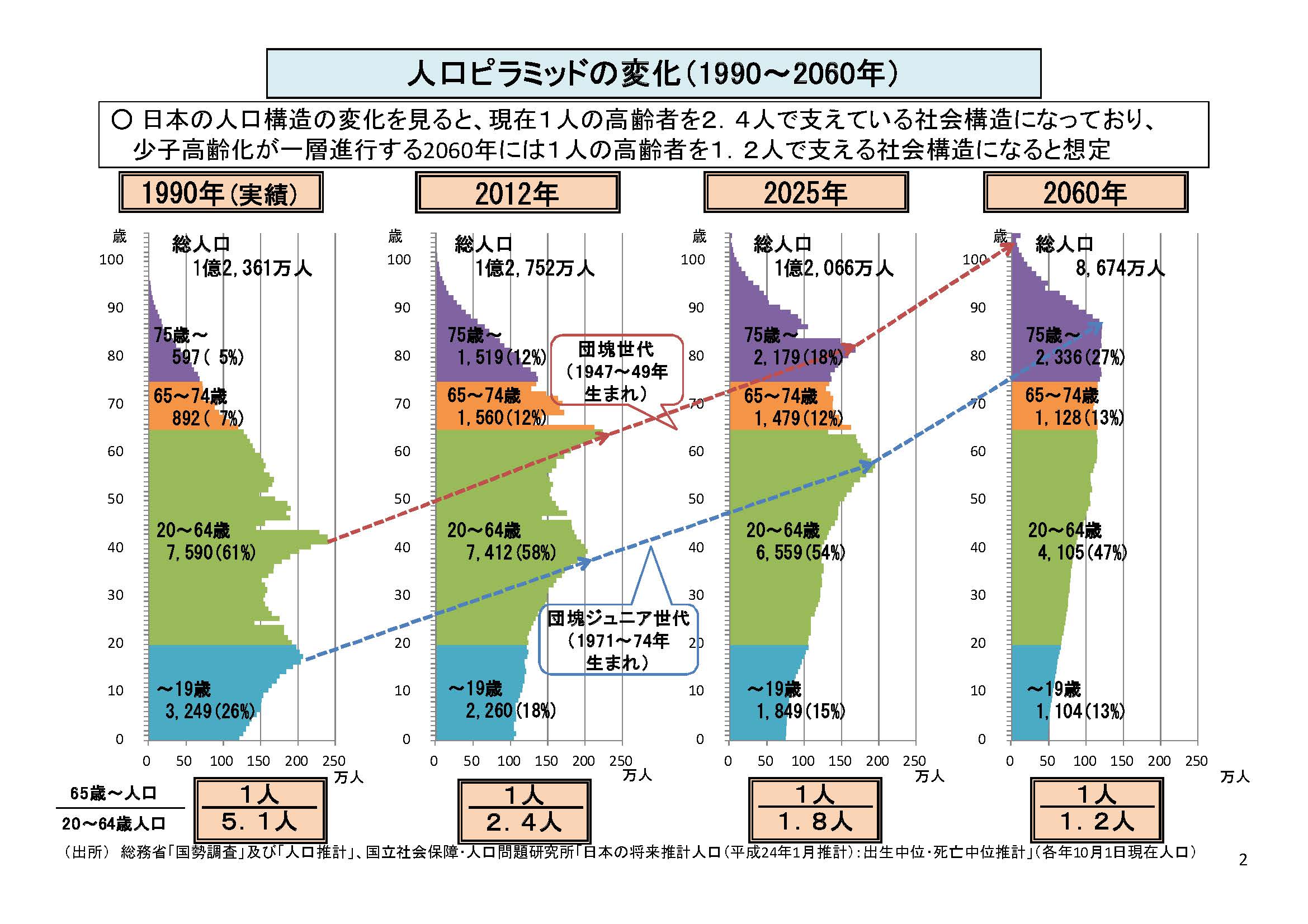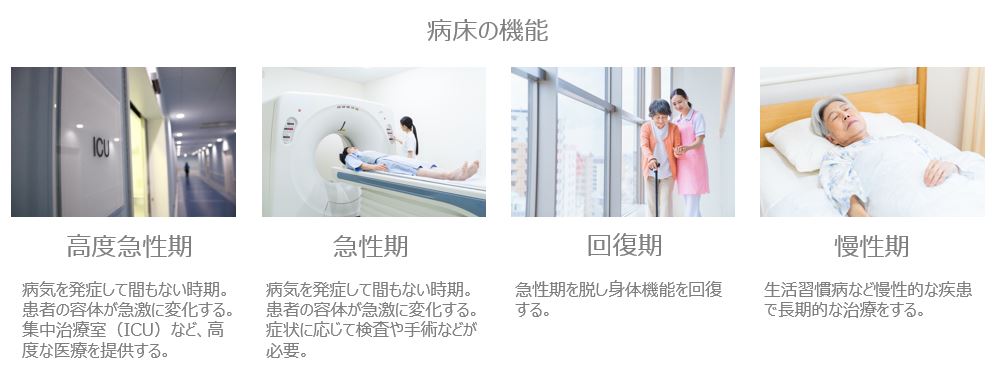ASOURCE®NAVI

公開日:2021.09.08
新型コロナウイルス感染症拡大に伴い、医療提供体制のあり方について様々な議論がなされています。2014年に成立した「医療介護総合確保推進法」によって制度化され、2025年の医療提供体制構築を目指す地域医療構想についても、感染症のパンデミックの対応を想定した内容への修正に向けた議論が進められています。

厚労省 11.【参考資料4】日本の人口等関係資料.より引用
2025年には人口の多い団塊の世代(1947〜1949年生まれ)が全員75歳以上となり、後期高齢者人口が、約2,180万人(総人口の18%)になると予想されています。高齢者の割合がさらに高まることで、医療や介護においても今以上に大きな影響が出ることが想定されています。具体的には、①病院数の減少や医師不足、②後期高齢者の増加による介護・医療需要の増加(寝たきり状態の高齢者や認知症患者の増加)、③後期高齢者の増加による医療費の増加、④現役世代の人口、労働力の減少による社会保障費の負担増加などです。
こうしたなかで、2025年を見据えた地域の医療提供体制の構築を検討する地域医療構想が進められています。将来人口推計をもとに2025年に必要となる病床数を高度急性期、急性期、回復期、慢性期の4つの医療機能ごとに推計した上で、地域の医療関係者の協議を通じて病床の機能分化と連携を進め、効率的な医療提供体制を実現する取り組みです。このなかでは、高度急性期病床と急性期病床の削減、回復期病床の充実、慢性期病床の削減、在宅医療の充実が求められています。また、高度急性期・急性期機能の診療実績などを分析し、2025年に担う役割や機能別病床数の再検証を要請する公立・公的医療機関等424病院の病院でダウンサイジングや機能転換を含んだ再編統合の検討が行われつつあります。

コロナ禍で、公立病院の統廃合作業は現在、一時的な凍結状態にありますが、再編リストにあがった約200機関はコロナ患者を受け入れており、再編方針を見直すべきとの意見も出されています。また、民間医療機関における新型コロナ患者の受け入れ病床の拡大に向けて、都道府県が民間病院と契約し、「民間医療機関の公共性確保」の観点から、仮に赤字になった場合には都道府県が補填するという仕組みもあり得るとする案も出されています。
昨年来行われている厚労省の医療計画の見直し等に関する検討会では、厚生科学審議会感染症部会や地域医療構想に関するワーキンググループにおける議論を踏まえつつ、新型コロナウイルス感染症対応を踏まえた今後の地域医療構想の課題として、新興感染症が発生した際に、行政・医療関係者が円滑に対応できるよう、新興感染症等への対応を医療計画に位置付ける方針が示されています。また、災害医療と類似していることから、「5事業(救急医療、災害医療、僻地医療、周産期医療、小児医療)」に追加することが適当としています。
その上で、各都道府県に対し、平時と感染拡大時に分け、地域の実情を踏まえながら、あらかじめ地域で議論・準備を行うことを促す方針が示されています。これによって、平時の負担を最小限にしながら、有事に機動的かつ効率的に対応することが可能となる、としています。
■平時からの取り組み
①感染拡大時に活用しやすい病床や病床以外の空きスペース等の整備(重症例や疑い症例等を想定した整備を含む)
②人材育成・確保(感染管理の専門性を有する看護師、ECMOや人工呼吸器管理に対応可能な医療スタッフ)
③感染防護具等の備蓄
④院内感染対策の徹底
⑤医療機関内でクラスターが発生した際の対応方針の共有
⑥医療機関におけるPCR検査などの体制整備などを記載。
■感染拡大時の取り組み
①受け入れ候補医療機関(重症例や疑い症例等を想定した受け入れ候補医療機関を含む)の確保
②感染症患者に対応するマンパワーの確保に向けた取り組み(感染症専門医以外を含めた対応、病院内の重点配置など)
③医療機関間の連携(感染症患者受け入れ医療機関やクラスターが発生した医療機関などへの医師・看護師など応援職員の派遣)と役割分担(感染症患者受け入れ医療機関と感染症患者以外に対応する医療機関)
また、人口減少、高齢化の実態を見据えた上で、新興感染症が発生した際の影響にも留意しつつ、入院医療、外来医療双方において、質の高い効率的な体制の確保に向けた取り組みを進める必要がある、と提言しています。
メディアスグループは、医療機器の販売を中心とした事業を展開しています。医療に携わる私たち(Medical+us)は、医療現場や人々の健康的な明日へ役立つ情報をお届けする情報発信源(Media)の役割も果たしていきたいと考えています。